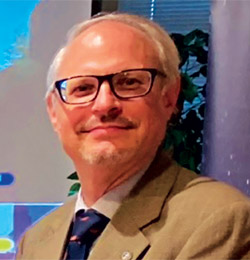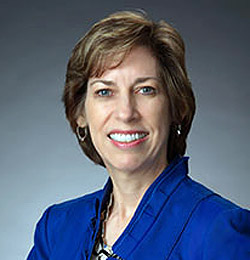INDIAN ARMED FORCES CHIEFS ON
OUR RELENTLESS AND FOCUSED PUBLISHING EFFORTS

SP Guide Publications puts forth a well compiled articulation of issues, pursuits and accomplishments of the Indian Army, over the years

I am confident that SP Guide Publications would continue to inform, inspire and influence.

My compliments to SP Guide Publications for informative and credible reportage on contemporary aerospace issues over the past six decades.
EXCLUSIVE
Half-A-Century Past, Apollo 11 Still a Discovery and Inspiration
As the world celebrates 50 years of Apollo 11, man’s first landing on the moon, SP’s Aviation interacts with the National Science Foundation to discover some vital ways in which the organization contributed to the mission.

50 years ago, with Apollo 11 humans set foot for the first time on another astronomical body, the Earth’s natural satellite. The mission changed and added perspectives and dreams that need no limit, provided inspiration to thousands of young minds and continue to do so.
While space travel has not become easier through these 50 years, what this half-a-century celebration marks is how much more complex yet ahead of itstime the instruments used for the Apollo missions were in the 1960s, as remarked byDr. Joseph E. Pesce, PhD, Programme Director, Division of Astronomical Sciences, Directorate for Mathematical & Physical Sciences, National Science Foundation and also a young child for whom missions like Apollo 11 further ignited his interests in astronomy, paving way for his career and life itself. This is another important highlight that comes from missions like Apollo 11 is the technological legacy that they provide.
PREPARING FOR THE UNKNOWN
In 1969, while the humans prepared to forge into something by far unknown and unexplored, it was a plunge into uncertainty and definitely called for excessive levels of preparations to have the best possible idea of what lay ahead for the astronauts. In this context, the National Science Foundation (NSF) played a significant role as the Apollo astronauts visited NSF’s KittPeak National Observatory to learn about the lunar surface. The trip that the astronauts of Apollo 11 made to the Moon might have happened only in July 1969 but they did have a much shorter trip to the lunar surface five year before the actual one in April 1964.
Apollo 11 astronauts Buzz Aldrin and Michael Collins had traveled to the Kitt Peak National Observatory near Tucson, Arizona to view the Moon through the McMath-Pierce Solar Telescope. A visitor’s logbook from the time described the viewing conditions during their visit: “Seeing fair, flashes of good (Moon low.)”. It was as a part of a training program designed to familiarize Apollo astronauts with the distant destination that awaited them.
Apollo 11 astronauts Buzz Aldrin and Michael Collins had traveled to the Kitt Peak National Observatory near Tucson, Arizona to view the Moon through the McMath-Pierce Solar Telescope. A visitor’s logbook from the time described the viewing conditions during their visit: “Seeing fair, flashes of good (Moon low.)”. It was as a part of a training program designed to familiarize Apollo astronauts with the distant destination that awaited them.
The NSF-funded McMath-Pierce Solar Telescope was the most sophisticated solar telescope in the world. Completed in 1962, the telescope’s great light-gathering ability and superior resolving power made it an important tool for early lunar mapping and photography which indeed played a crucial role in preparing the astronauts to some extent before their actual lunar landing.
Using the solar telescope at Kitt Peak, the University of Arizona geologists collaborated with the U.S. Geological Survey to create maps of the Moon for the Apollo program. The astronauts were also provided with custom-made eyepieces that had been designed exclusively for the Apollo visit by the staff of the observatory. These “astronaut eyepieces” allowed the group of astronauts to view enlarged sections of the Moon simultaneously.
‘The video of Apollo 11 began as a faint, high-frequency transmission from the lunar lander. By the time the signal reached the Earth it was too weak to be detected by common radios and televisions. It took radio astronomers with sensitive antenna dishes to capture the signal. The Apollo mission was a tremendous feat of engineering. It was a bold plan never attempted before or since. But it took the ingenuity of radio astronomers to tell its story,’ states an NRAO blog.
During April and May 1964, the three groups of Apollo astronautsvisited NSF’s observatoryto study the lunar surface and be trained not only as astronauts but also as scientists. This was done as a part of the requirement that NASA aspired for the astronauts to not just fulfill technical needs during their missions but to also become competent scientific observers. These visits to NSF observatory, allowed Apollo astronauts to receive training that prepared them to collect data and perform experiments on the lunar surface.
While in Arizona, the astronauts also visited meteor craters and lava fields to study volcanic structures and impact craters like those they might see on the Moon.
COMMUNICATION CORD
A very significant aspect of the 50-years-old Apollo mission was the communication that took place from the Moon and back to Earth, between the astronauts on the lunar surface to the team on Earth. Without the successful communication, we would have never heard Neil Armstrong utter, “That’s one small step for a man, one giant leap for mankind” as he became the first man to step on the surface of the Moon. We would have seen neither Buzz nor Neil walking on the lunar surface, nor planting the flag or have any of the constant updated communication.
“A take away for me from Apollo 11 was that we can do anything. Any goal that we admit for ourselves can be reached. It might even be an awe-inspiring goal which we might not be able to accomplish right away but if we work hard towards it we can develop the technology for it and make it happen. Certainly don’t limit your goals and dreams, you might not be able to do it today but you surely can in the future,” —Dr Joseph E. Pesce, PhD, Programme Director, Division of Astronomical Sciences, Directorate for Mathematical & Physical Sciences, National Science Foundation
However simple it may appear or sound, the communication was not as easy a transfer as a telephone call we have across the world. It required radio astronomers and radio observatories across the world to capture, gather and communicate the information being sent from the Moon.
“A worldwide network of radio antennas, not only the set-up of just that large network of dishes but also to move and transfer the large amount of that data from one telescope to other was required and NRAO played a pivotal role in that,” informed Dr. Joseph. NRAO is NSF’s National Radio Astronomers Observatory.
‘The video of Apollo 11 began as a faint, high-frequency transmission from the lunar lander. By the time the signal reached the Earth it was too weak to be detected by common radios and televisions. It took radio astronomers with sensitive antenna dishes to capture the signal. The Apollo mission was a tremendous feat of engineering. It was a bold plan never attempted before or since. But it took the ingenuity of radio astronomers to tell its story,’ states an NRAO blog.
With landing humans on Moon and returning them safely, Apollo 11 was itself a complex and far-sighted mission but that was not all. The Kennedy administration wanted to have a live feed of the lunar landing and Apollo was required to send radio messages as well from the Moon. NRAO explains that through radar astronomy, the motion and distance of the Moon was known to be within about a kilometer, precise enough for an attempted landing. Radar-ranging would allow a lander to reach the lunar surface safely but radio messages were still to be delivered from the Moon and that was some task at hand.
Live television was transmitted from the Moon to three ground stations, two in Australia (Parkes Radio Astronomy Sire New South Wales and Honeysuckle Creek Tracking Station Canberra) and one in California (Goldstone Tracking Facility Mojave Desert). The signal was converted to a standard broadcast signal and then sent to Houston, via, satellite, landline or microwave antenna.
“Apollo 11 captured my imagination just how it did of millions of people all over the world. It’s incredible to think of standing on a dark night outside your home and looking up the Moon and realising that people were going to be walking on that Moon. It’s absolutely incredible, it still gives me goosebumps to think about it. It’s a truly compelling moment.” —Dr. France A. Córdova, Director, National Science Foundation (NSF)
Goldstone observatory was built in 1958 by the Jet Propulsion Laboratory to communicate with the early Pioneer missions to lunar orbit. Armstrong’s landing was timed so that Goldstone could capture the signal, as well as the Honeysuckle Creek Tracking Station in Australia. Parkes Observatory (made famous in the movie The Dish) also captured some of the lunar images, though not Armstrong’s first minutes on the Moon. Thereby, without radio astronomy, it would not have been possible to obtain the live images of Apollo 11.
While the radio observatories are now a crucial part of pretty much all astronomical observations, Dr. Joseph would hope that as humans return to Moon in 2024 with Artemis carrying the hope for settling on the moon, there might also come a time soon for observatories to be set up on the Moon. “It would be nice to put some observatories on Moon at some point of time. Moon would be a nice place for some radio observatories as it offers a great environment for radio astronomies and even for optical astronomy and thus ensure better astronomical observations about other astronomical bodies out there in the universe,” he said.
AN INSPIRATION ETCHED FOREVER
The 50 years celebration of the Apollo 11 mission and the countless events that were held around it only remind how alive the mission still is in people’s mind all over the world. “Even though we have not landed on Moon after the Apollo programs, it is still inspirational to people and continues to be a reason to celebrate,” said Dr. Joseph.
What has also been remarkable with these 50 years of celebrations of Apollo 11 is the revelation of many facts or information about Apollo 11 which were still hidden despite the mission being conducted 50 years ago, just yet again pointing out how science is a never-ending, ever-evolving, ever-discovering process.
“I think there were two really lasting impressions from Apollo and one is that we got this whole new perspective of our home planet and I think that was somewhat unexpected coming out of Apollo and the second was the power of a team, what a committed, dedicated team can accomplish when they are given a mandate and they are given the resources to carry out that mandate and that’s been important to me throughout my career because I really got to see both of those things as we moved on to the shuttle program.” —Dr. Ellen Ochoa, Vice Chair, National Science Foundation
Even though Dr. Joseph admits that with humans going up to the Moon and returning did give hopes for men to be soon staying longer on the Moon, the pause after the Apollo programs did wash those aspirations. But he also added that space travel is very difficult. “One of the probable reasons why we have not gone after the Apollo mission though we expected staying on Moon is the difficulty and complexity of the whole process. Some might say we have lost 50 years of exploration but I’d say we have been developing technologies during that time because it is very difficult. Even though people see space travelling happening quite frequently now, it still is not easy. Going to the space station in itself is difficult let alone going to the Moon or Mars but those developments would not have occurred if it was not for missions like Apollo 11,” added Dr. Joseph.
He also highlighted how that is what Apollo 11 did. It not only provided scientific advancement and space expedition but made way for technology, brain power, research and an inspiration that continues to facilitate more space explorations.
“A take away for me from Apollo 11 was that we can do anything. Any goal that we admit for ourselves can be reached. It might even be an awe-inspiring goal which we might not be able to accomplish right away but if we work hard towards it we can develop the technology for it and make it happen. Certainly don’t limit your goals and dreams, you might not be able to do it today but you surely can in the future,” said Dr. Joseph.








